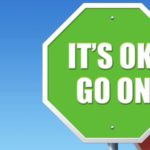Domestic Violence Murders Double in New South Wales

According to data recently released by the Bureau of Crime Statistics and Research (BOCSAR), the number of domestic violence-related murders in New South Wales has doubled over the past year
The statistics also suggest that after years of steady decline, several other categories of violent crime are also on the rise.
Domestic violence homicides
The figures suggest that 38 people were killed by those with which they had a domestic relationship in the 12 months to March 2019, up from 19 the previous year.
The number of domestic assaults rose slightly, while the rate of domestic violence assaults resulting in grievous bodily harm remained unchanged.
Male victims on the rise
The most significant increase was seen in male victims of domestic violence homicides.
Whereas women accounted for 15 of the victims, up from 11 the previous year, men made up 14, compared with five the previous year.
Seven victims were children killed by a parent, up from one the previous year.
It should be noted that the categories extends beyond partners, to include relatives, carers and those who live together but are not in an intimate relationship.
39 of the domestic violence-related homicides over the past two years occurred in the greater Sydney region, including five in the inner south-west, six in Parramatta and six in the south-west. There were nine in the Newcastle and Lake Macquarie area, and four in both the Illawarra and the Mid North Coast.
Attorney-General Mr Speakman said the data suggests that anyone can be at risk of domestic violence, adding that “[i]n the majority of cases there had been no prior reporting to police … these victims were not even on the police radar”.
Poor people most at risk
The link between poverty and domestic violence has long been documented, with those in difficult financial situations being more likely to remain in volatile relationships due to having insufficient means to do otherwise.
More people reporting assaults
According to Assistant Police Commissioner Mark Jones, the slight rise in the rate of domestic violence-related assaults is partly due to victims being more likely to report the incidents.
“People are now more comfortable reporting these crimes to us,” he stated. “The [rate of] grievous bodily harm assault, which we believe is a very good indicator, that’s the one that’s been going down over the past 10 years and that’s very encouraging.”
BOCSAR director Dr Don Weatherburn agrees, explaining that better education and a broader acceptance that domestic violence is not to be tolerated has contributed to victims being more likely to come forward.
Overall murder rate
Of some concern, however, is the fact that overall murder rates have increased by 40% over the past two years, after a steady downward trend over the previous decade. There were a total of 74 murders in our state last year, and 53 the previous year.
Dr Weatherburn believes, however, that the increase should be viewed in context. “It is important not to jump too fast at figures between one year and the next year. The long-term trend is down,” he explained.
He points out that 2017 was an “extraordinarily low year” for homicides, and that rates for the years thereafter are consistent with the years before.
General crime trends
The BOCSAR report found that, “none of the 17 major offences categories were trending downwards,” with increases or no change across the board.
The figures suggest that assaults jumped by 5.8%, possession and use of cocaine increased by 7% and the use of amphetamines was up by 8.4%. Other crime categories such as robbery, break and enter, stealing and fraud remain stable.
But again, this should be viewed in the context of a steady, prior downward trend – meaning that crime rates are generally consistent with 2017 levels.
In fact, the figures suggest that rates of violent crime in our state have been trending downwards in our state almost across the board for the past 40 years.







